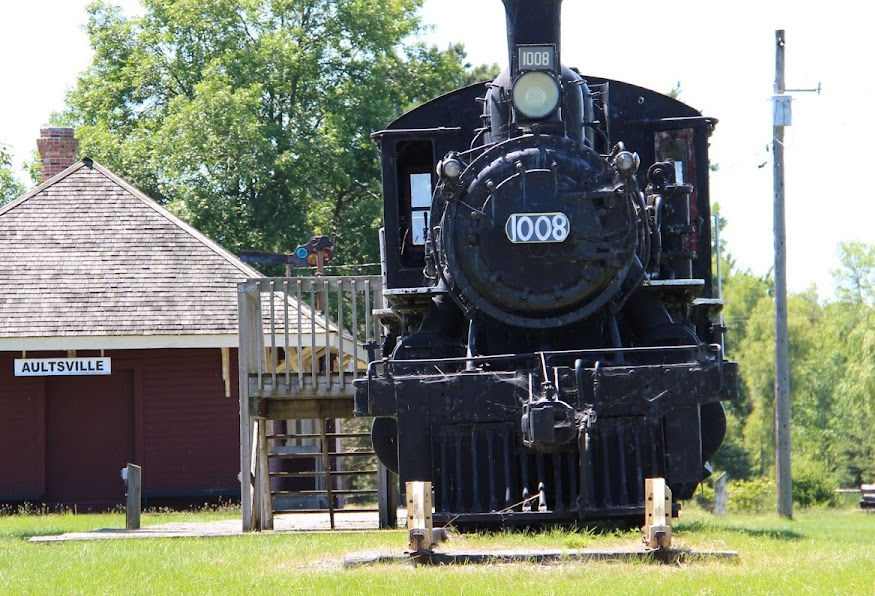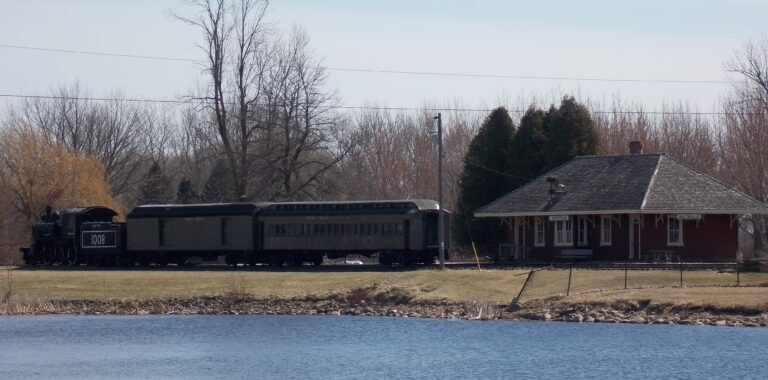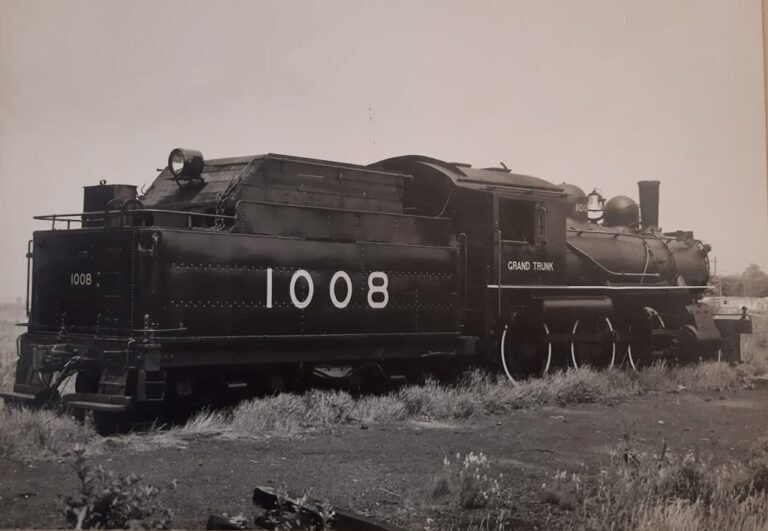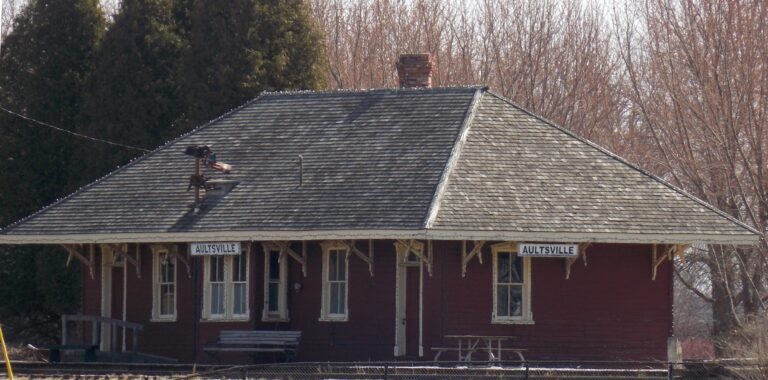
Now & Then: The nine lives of the GTR 1008 and the Aultsville Train Station
If you are travelling along County Road 2 between Upper Canada Village and the Crysler Marina, you will notice the GTR 1008 locomotive, pulling its baggage and coach cars. It is as though they were leaving the Aultsville train station.

Located in the Crysler Farm Battlefield Park, the pieces are a representation of the golden age of the railway in Ontario. It is also a testimony to the perseverance of a group of volunteers who just wouldn’t let it go. Over the years, the fate of the Grand Trunk Railway number 1008 could have gone in many directions and it has indeed gone through many lives already.
The GTR 1008 is a steam locomotive built in 1910 by the Canadian Locomotive Company in Kingston. The locomotive was nearly lost in 1953 when it derailed and flipped over on the streets of Hamilton. The engine had a cracked firebox and a badly damage cab. It was saved and returned to service. In 1957, at the creation of Upper Canada Village and Crysler Farm Battlefield Park, CNR donated the Ontario-St. Lawrence Development Commission (now St. Lawrence Parks Commission). They had restored it to its original condition and number GTR 1008. The coach passenger car came the same year. The refrigerated baggage car was moved in 1965, it had transported fruit in the Niagara region.

The timing of the creation of Upper Canada Village and Park corresponded with the flooding and loss of six villages and three hamlets to the St. Lawrence Seaway and Hydroelectric Projects. Saved from destruction, the Aultsville train station was lifted from its foundation, placed on a railway flat-car and rolled to its present location. That section of rails is the only remaining portion of the original GTR/CNR line. The restored station, built in 1889, contains a ticket office and a fully functional telegraph operator’s bay. The separate waiting rooms for men and women travellers are still visible today. In summer, it serves as the British Home Child Museum.
Over its long life, the locomotive and wooden cars have periodically fallen prey to the elements. The St. Lawrence Parks Commission had funding for maintenance only and found it difficult to keep up with the needed repairs. Some work was done in 1980. Water infiltration was a problem. The cars were damaged and rotting. Eventually, they were closed to the public. In 2000, the SLPC did not wish to have the financial burden anymore. A local group was formed to keep the train at its location. The Save The Train campaign raised money, and volunteers and local businesses provided labour and materials. An agreement with the Parks Commission was made. GTR 1008 lived again.

In 2018, history likes to repeat itself and the pieces have weathered again. Facing the need for repairs, the St. Lawrence Parks Commission, citing a lack of funds, decided to divest itself of the train. Again, concerned local citizens would have no such thing and Save the Train 2.0 was started by many of the same people who had done the work previously. An agreement was signed and now Friends of the GTR 1008, an incorporated group, has full stewardship of the assets. Work started in 2020. It is ongoing, and it is typical to see a hive of activity on weekends. GTR 1008 just received another life!
Our ‘Now & Then’ series, unveils the rich tapestry of South Eastern Ontario’s historical landmarks and buildings, all waiting to be discovered on your travels. Delve into the intriguing stories behind these iconic structures and the vibrant communities they call home.
Written by Ginette-Guy Mayer; her interest as a writer revolves around history, genealogy and women’s stories within those contexts. Now retired, she lives in Cornwall, Ontario, where she volunteers with various heritage, history and genealogical groups. She is the author of the biography Unforgotten Mary Mack, the Elizabeth Grant Mysteries, set in 1930s Cornwall and the DS Henry Stafford Mysteries series, set in 1980s Winchester/Chesterville.
